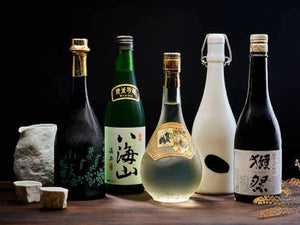
What is Sake made from?
Ingredients of Sake
Sake is made from four main ingredients: rice, water, yeast, and Koji (a type of mold, often translated as rice yeast or rice malt).
Rice
The rice used for sake is different from the rice we normally eat. Sake rice, known as Sakamai or Shuzotekimai, is larger and contains less fat and protein, which makes it suitable for sake production. It also has greater absorbency. While sake rice is primarily used for Ginjo and Dai-ginjo sakes, regular eating rice is sometimes mixed in small proportions during the sake-making process.
Water
Water is crucial in sake production, accounting for up to 80% of the ingredients. The quality of water significantly affects the flavor and aroma of the final product. Many sake breweries are located near rivers or headsprings to access high-quality water for their production.
Koji
Koji is a type of mold that plays a vital role in the fermentation process by converting starch into glucose. Despite being a mold, it is harmless to humans, similar to yeast. Koji is also used in the production of other Japanese staples like soy sauce, miso, mirin, vinegar, and alcoholic beverages such as Shochu and Awamori.
Yeast
Yeast (Kobo) is essential in the fermentation process, converting glucose into alcohol. The type of yeast used significantly influences the aroma of the sake, which is why it is often listed on the bottle's label. Most yeasts are provided by the Brewing Society of Japan.
Lactic Acid
Lactic acid is also added to determine the acidity of sake and is sometimes considered one of the main ingredients.

